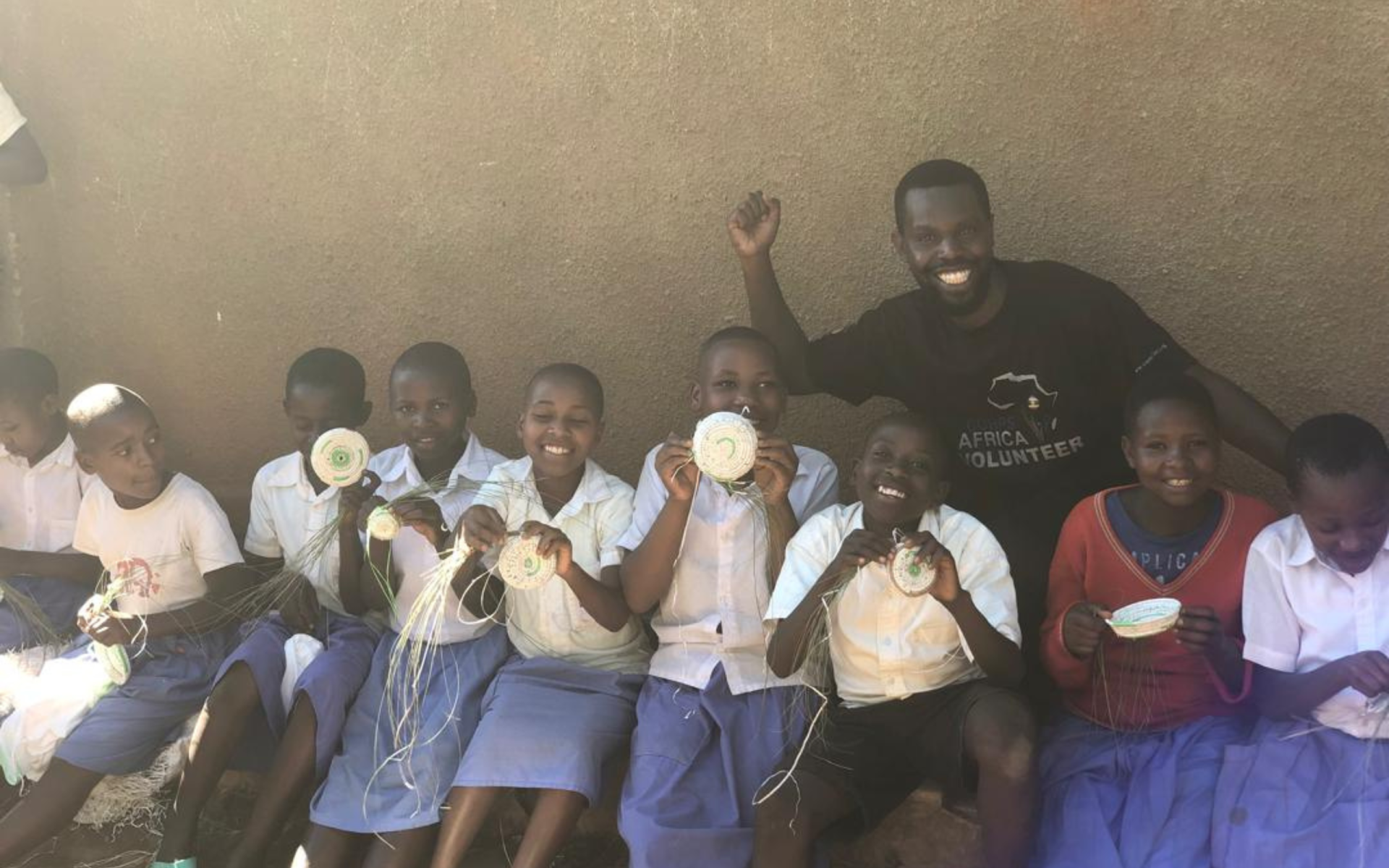As a CorpsAfrica Volunteer, my success and strength are anchored on the Innovators’ Compass as a tool with five powerful questions to ensure community ownership and sustainability. With the application of the Innovators’ Compass, I have been able to start a handiwork initiative at Kavu Primary School in Kyerero Village, Kabale district. The project is under the experiment/prototyping stage of the innovators’ compass.
I am happy to share my experience in using and answering the Innovators’ Compass question during my community service in the rural areas of the Kabale district.
Who is involved?
Together with the school administrators, we identified seventy-six pupils from primaries four and five at the school and the focal teacher to answer the ‘’Who is Involved?’’
What’s happening and why?
In groups of seven, I interacted with the pupils to understand more about their current issues and status as they pursue their primary school education. Some pupils identified long distances to school, whereas the others identified a lack of scholastic materials to enable them to finish their primary school. Factors attributed to these challenges include low house income and a limited parental commitment to their children’s education.
What matters most?
To identify what matters most to the pupils and the school administration, we ranked the two issues and realized that 97% of the pupils struggle to get scholastic materials like school fees, books, pens, uniforms, mathematical sets, pens, and pencils.
What ways are there?
Nothing beats the teamwork and commitment of young resilient Ugandans. After knowing what matters most to both the pupils and the school administrators, it was time to brainstorm and identify possible ways to address the issue of lack of scholastic materials in order of priority. Pupils led and identified human resources and natural assets within the school area to address the lack of scholastic materials.
Human resources identified included a focal teacher to ensure sustainability and marketing. Another human resource was the pupils with skills in craft making such as weaving baskets, and mats and making mingling sticks. Natural assets included bukedo, raffia, and banana fibers needed to start the handiwork initiative. These baked and raffia baskets not only showcase traditional weaving techniques but also infuse modern creativity through color and design as portrayed in the different products made. Having identified these resources, pupils chose to start with basket making as their first-hand craft item to get income for their scholastics.
Experiments.
Armed with the bukedo, raffia, banana fibers, needles, and plastic threads, the excited pupils started the journey to craft baskets and experiment to ensure the best baskets were produced to meet the market standard. By experimenting, we are trying different designs, sizes, and colors to choose what is best for the market consumption.

